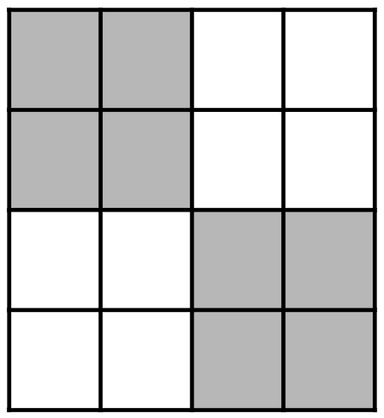Myths about teaching can hold you back


- Year 5
Explain the relationship between numerators and denominators in equivalent fractions
I can explain the relationship between the numerators and denominators in equivalent fractions


- Year 5
Explain the relationship between numerators and denominators in equivalent fractions
I can explain the relationship between the numerators and denominators in equivalent fractions
These resources will be removed by end of Summer Term 2025.
Switch to our new teaching resources now - designed by teachers and leading subject experts, and tested in classrooms.
These resources were created for remote use during the pandemic and are not designed for classroom teaching.
Lesson details
Key learning points
- Equivalent fractions share the same multiplicative relationship between the numerator and denominator.
- If a fraction is equivalent to a half, the numerator will be half the value of the denominator.
- If a fraction is equivalent to fifth, the denominator will be 5 times the value of the numerator.
Keywords
Numerator - The numerator is the top number in a fraction and shows how many parts we have.
Denominator - The denominator is the bottom number in a fraction and shows how many equal parts the whole has been divided into.
Equivalent fraction - Equivalent fractions are fractions which have the same value, even though they may look different.
Common misconception
Children do not always see the link between the numerator and the denominator in equivalent fractions. This lesson highlights that link and the fact that the proportion of the whole is the same.
Use the stem sentences and generalisations in the lesson to describe the fractions and to relate them to the representations used.
To help you plan your year 5 maths lesson on: Explain the relationship between numerators and denominators in equivalent fractions, download all teaching resources for free and adapt to suit your pupils' needs...
To help you plan your year 5 maths lesson on: Explain the relationship between numerators and denominators in equivalent fractions, download all teaching resources for free and adapt to suit your pupils' needs.
The starter quiz will activate and check your pupils' prior knowledge, with versions available both with and without answers in PDF format.
We use learning cycles to break down learning into key concepts or ideas linked to the learning outcome. Each learning cycle features explanations with checks for understanding and practice tasks with feedback. All of this is found in our slide decks, ready for you to download and edit. The practice tasks are also available as printable worksheets and some lessons have additional materials with extra material you might need for teaching the lesson.
The assessment exit quiz will test your pupils' understanding of the key learning points.
Our video is a tool for planning, showing how other teachers might teach the lesson, offering helpful tips, modelled explanations and inspiration for your own delivery in the classroom. Plus, you can set it as homework or revision for pupils and keep their learning on track by sharing an online pupil version of this lesson.
Explore more key stage 2 maths lessons from the Comparing fractions using equivalence and decimals unit, dive into the full primary maths curriculum, or learn more about lesson planning.

Licence
Prior knowledge starter quiz
6 Questions
Q1.Which pairs of equivalent fractions can you see in the image?

Q2.Which fractions could you use to describe the shaded fraction of this shape?

Q3.Which fractions represent the shaded part of the number line?

Q4.Match the parts of the sentences so that they describe equal parts of a whole.
1 is the same proportion of 2 as -
2 is of 4
1 is the same proportion of 3 as -
2 is of 6
1 is the same proportion of 4 as -
2 is of 8
1 is the same proportion of 5 as -
2 is of 10
Q5.Which of these equations will give an answer of zero?
Q6.Which of these equations will give the same answer?
Assessment exit quiz
6 Questions
Q1.Which of these images represent equivalent fractions?




Q2.Match the statements which describe the digits in these fractions.

The numerator -
increases by 1 each time.
The denominator -
is always a multiple of 4
The numerator is -
the top number in the fraction.
The denominator is -
the bottom number in the fraction.
Q3.What is the relationship between the numerator and the denominator in these fractions?

Q4.Complete this sentence: In all fractions equivalent to one half, ...
Q5.Match the definitions of these equivalent fractions.
Fractions equivalent to $${1}\over{5}$$ -
The denominator is 5 times the value of the numerator.
Fractions equivalent to $${1}\over{3}$$ -
The denominator is 3 times the value of the numerator.
Fractions equivalent to $${1}\over{4}$$ -
The denominator is 4 times the value of the numerator.
Fractions equivalent to $${1}\over{6}$$ -
The denominator is 6 times the value of the numerator.

